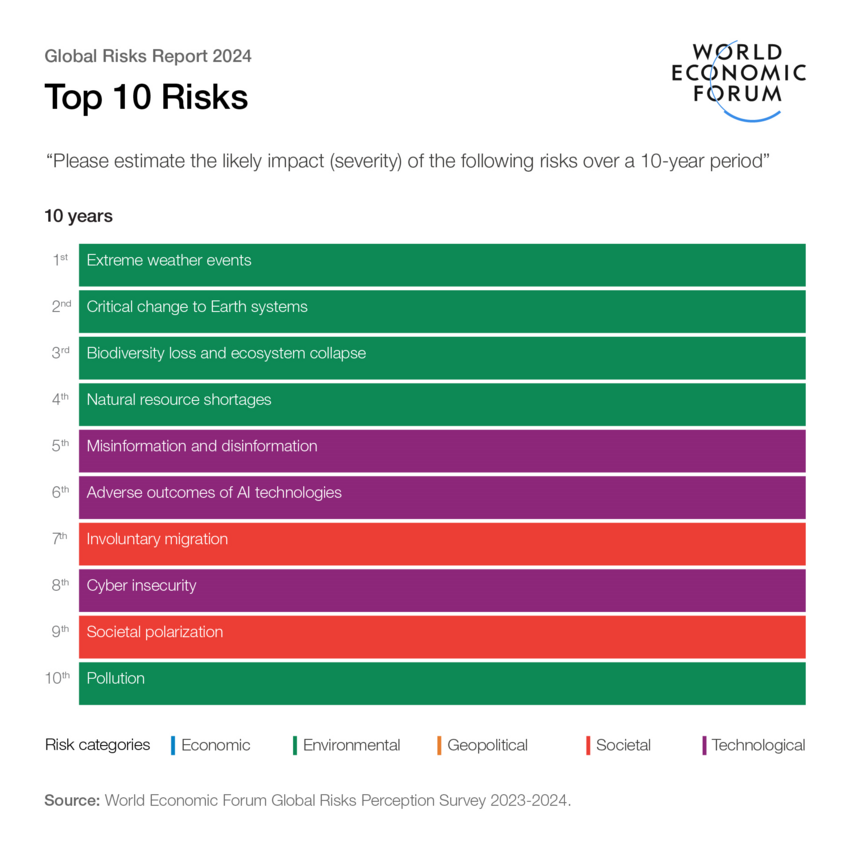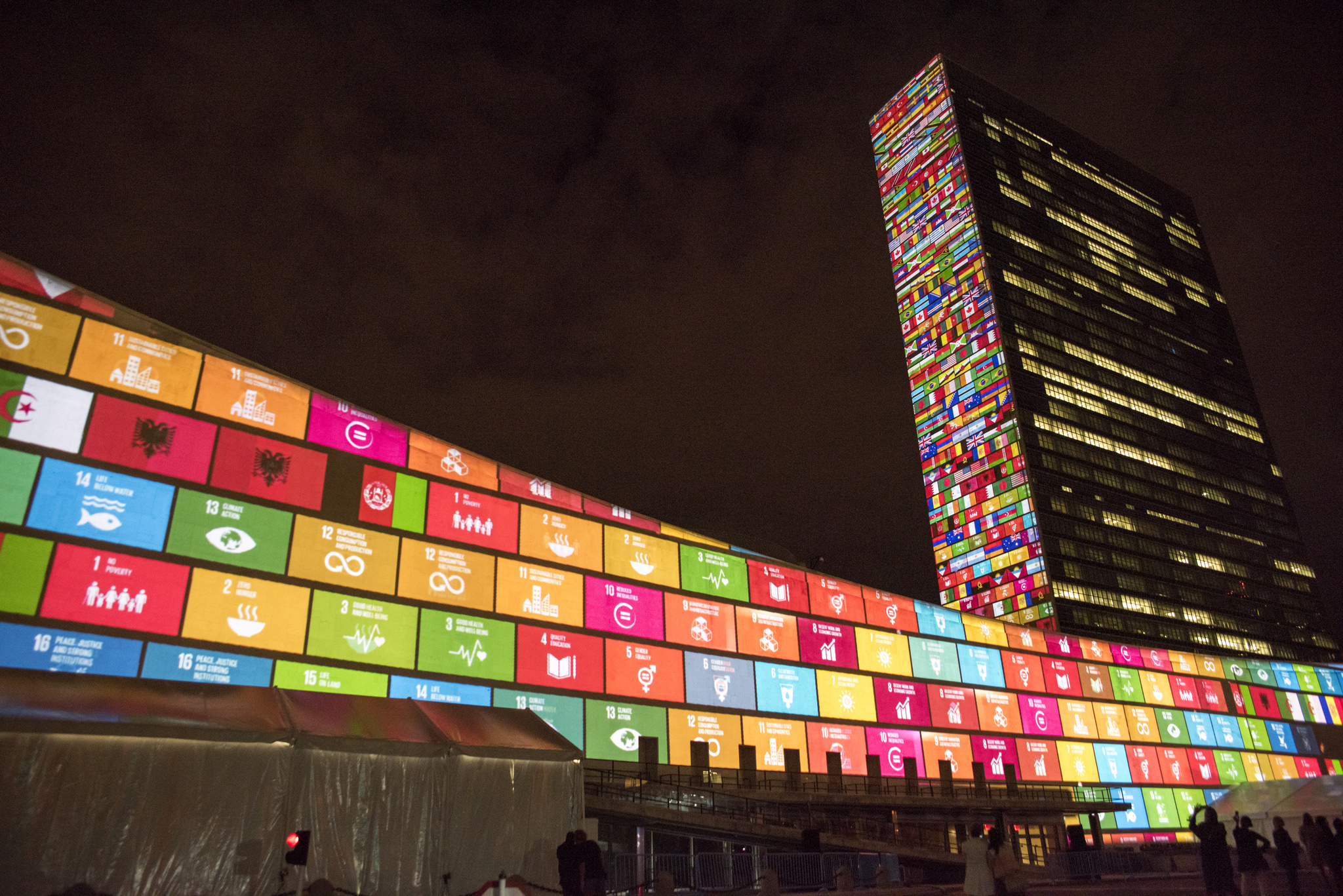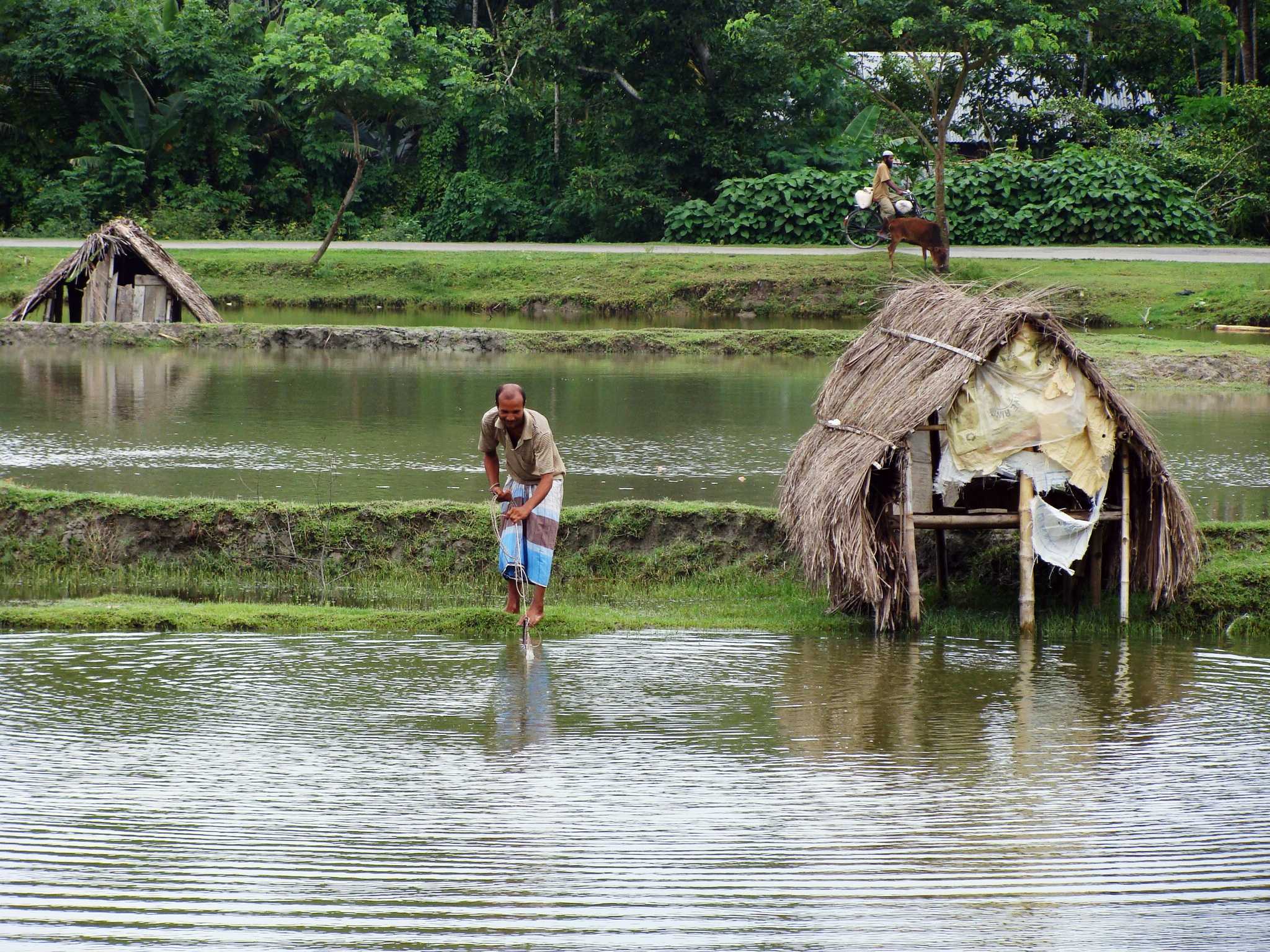2023 was the hottest year on record, exceeding pre-industrial temperatures by 1.48°C and therefore almost reaching the 1.5°C limit agreed by Parties in Paris. The Copernicus’ annual Global Climate Highlights report, primarily relying on the ERA5 reanalysis dataset, reports that global average temperature reached 14.98°C, breaking the previous record set in 2016.
Moreover, every single day in 2023 surpassed 1°C above pre-industrial levels, and approximately 50% of days were more than 1.5°C warmer. The report hints at a high likelihood of breaching the 1.5°C target within the 12 months ending in early 2024.

2023 was also marked by a cascade of extreme weather events that left an indelible impact on every inhabited continent, as presented in the annual WMO (World Meteorological Organization) provisional State of the Global Climate report.
Tropical Cyclone Freddy in February and March was one of the world’s longest-lived tropical cyclones with major impacts on Madagascar, Mozambique and Malawi. Tropical Cyclone Mocha, in May, was one of the most intense cyclones ever observed in the Bay of Bengal.
Storm Daniel was the deadliest Mediterranean tropical-like cyclone in recorded history, unleashing devastating floods in Greece, Bulgaria, Türkiye, with particularly severe impacts in northeastern Libya.
Southern Europe and North Africa experienced unprecedented heatwaves, with record temperatures reaching 48.2°C in the Italian insular region of Sardinia, 49.0°C in Tunis, Tunisia, 49.2°C in Algiers, Algeria, and 50.4°C in Agadir, Morocco.
Canada witnessed an unparalleled wildfire season, scorching 18.5 million hectares, more than six times its 10-year average, resulting in severe smoke pollution across eastern North America. Hawaii, in turn, faced the deadliest wildfire in the USA in over a century.
The Greater Horn of Africa endured five consecutive seasons of drought, setting the stage for devastating floods. In Central and South America, long-term droughts in northern Argentina and Uruguay led to crop losses and critically low water storage levels.
In the wake of a record-breaking year for extreme weather and climate events, it comes as no surprise that 2024 is poised to be no less challenging.
Understanding the risks
The World Economic Forum’s (WEF) 2024 Global Risks Report, published in January, presents the risks we may face over the next decade, amidst a backdrop of rapid technological advancements, economic uncertainties, a warming planet, and global conflicts. The report, compiled from the insights of nearly 1,500 leaders across diverse sectors, including business, academia, civil society, and government, underscores the persistent dominance of environmental risks across all three assessment timeframes.

Two-thirds of Global Risk Perception Survey respondents identify Extreme Weather as the top risk most likely to trigger a global crisis in 2024, while it also emerges as the second-most severe risk over the two-year horizon. Moreover, environmental risks occupy nearly all of the top 10 positions in the long-term assessment in the report.
According to the IPCC, “it is an established fact that human-induced greenhouse gas emissions have led to an increased frequency and/or intensity of some weather and climate extremes since pre-industrial time.” The severity and frequency of climate extremes are increasing as the world warms. Even small increases in global warming can cause significant changes in extreme weather patterns. This is particularly true for extreme temperatures, heavy precipitation, and droughts. According to the IPCC AR6 report on the Physical Science Basis of climate change, “the occurrence of extreme events unprecedented in the observed record will rise with increasing global warming, even at 1.5°C of global warming,” with a greater projected percentage increase in frequency for less common extreme events.
CMCC stands at the forefront of research on climate extremes. By leveraging its advanced climate simulation models, the center is able to unravel the complex dynamics and interconnected drivers behind extreme events. Researchers at CMCC delve into the intricate relationship between climate variability, climate change, and the occurrences of extreme events, while at the same time focussing on the potential impacts that these events might have on the climate system. The focus covers a wide range of events, from extreme precipitation and heatwaves to droughts, tropical cyclones (such as hurricanes and typhoons), and medicanes (i.e., Mediterranean hurricanes).
For example, the CLINT (CLimate INTelligence) project employs Artificial Intelligence (AI) and Machine Learning techniques to enhance the detection, causation, and attribution of extreme events. A collaborative effort with CMCC, Politecnico di Milano and other European partners, CLINT aims to harness the power of AI to improve the accuracy of predictions, especially regarding tropical cyclones and heatwaves.
Within the CLINT project, researchers at CMCC are exploring the potential improvement of the ability to detect and forecast extreme weather events through the integration of Artificial Intelligence into standard detection methods widely used in the scientific community.
The tools, developed in collaboration with the international Artificial Intelligence research community, have already yielded results, such as the improvement of some global indices of tropical cyclone occurrence (for example published in: Cavicchia et al. 2023 and Ascenso et al. 2023). The collaboration is expected to yield further significant outcomes in 2024, with ongoing efforts to refine detection mechanisms, enhance the representation of extreme precipitation and advance seasonal predictions, particularly for phenomena such as heatwaves.
In addition, “Traditional reanalyses such as ERA5 are not renowned for being good products in terms of representing precipitation, especially when examining extreme precipitation events associated with tropical cyclones,” says CMCC Senior Scientist Enrico Scoccimarro. “Through AI tools and algorithms, we are trying to make a sort of correction to what ERA5 produces, examining and readjusting the structure and different patterns expected in higher-resolution observational datasets representative of precipitation. This is something that can be very useful to obtain more consistent values closer to observations in impact models.”
Research and extreme events
MEDEWSA (Mediterranean and pan-European forecast and Early Warning System against natural hazards), is a recently-launched project with the two-folded goal of standardizing information on natural hazards and of improving individual existing early warning systems for countries in Africa and Europe.
Climate change intensifies natural hazards, heightening the complexity, cost, and frequency of emergency responses, particularly in rapidly warming regions. MedEWSa aims to tackle these challenges by offering advanced solutions for timely, precise, and actionable impact and finance forecasting. This includes the development of a fully integrated impact-based multi-hazard Early Warning System (EWS), building upon existing tools. The project aims to deliver a sophisticated pan-European–Mediterranean–African solution to enhance response strategies and aid first responders in vulnerable areas.
The project is structured into eight carefully selected pilot sites, namely areas in Europe, the Mediterranean, and Africa with a history of being impacted by natural hazards and extreme events with cascading effects. The eight sites are paired into four twins, that is, pairs of sites where early warning systems for the same type of event are already implemented but in different ways.
The first twin concerns wildfires and their connection to extreme weather events such as droughts and strong wind in the Attica region of Greece and the National Parks in Ethiopia. Venice, Italy, and the Egyptian city of Alexandria with the Nile Delta are paired in the second twin, focusing on coastal floods and storm surges. The third twin addresses floods and landslides in Kosice, Slovakia and Tbilisi, Georgia. Heatwaves, droughts and wildfires are also the focus of the fourth twin, coupling the Spanish region of Catalonia with Sweden.
The twins will connect regions characterized by diverse climatic and physiographic conditions but facing similar hazards. Positioned strategically, they will facilitate sustained and reciprocal knowledge exchange over the long term, and showcase the adaptability and versatility of the tools created within the MedEWSa project.
“In MedEWSa, we are committed to improving existing early warning tools,” said Scoccimarro. “For instance, we are trying to extend the timespan of the existing early warning systems from a few days or a week, to a subseasonal temporal scale, ranging from ten to twenty days. This could be useful for example for planning long-term interventions on the infrastructures of the Venice lagoon.”
Researchers at CMCC have been actively engaged in diverse research lines related to extreme climate, including assessing the impact of global warming across various future scenarios by the century’s end in comparison to historical periods. CMCC employs multi-model analyses, considering outcomes from various climate simulation groups to ensure the reliability and consistency of the information provided. This allows for an extended capability to predict events on different time scales, from seasonal to decadal, and thus for comprehensive studies on projections over extended periods.
For example, this includes exploring the role of global warming in influencing the statistics of extreme events like tropical cyclone activity, heatwaves, extreme precipitation, and perceived temperature extremes. Furthermore, the potential role of extreme events in modulating climate variability and change is also explored, thanks to the availability of general circulation models that are able to represent the processes at the base of such extreme conditions.
Other research projects at CMCC, often supported by funding from the European Centre for Medium-Range Weather Forecasts (ECMWF) through the Copernicus program, focus on downscaling for more localized analysis, such as examining extreme precipitation events on a smaller scale. These projects involve a comprehensive evaluation of projections, considering scenarios from CMIP6, encompassing both global and regional assessments. CMCC assessments extend to historical periods, scrutinizing how different models represent statistics related to extreme precipitation and temperature events, or to extreme weather phenomena such as intense extra-tropical storm events.
“Our focus on the improvement of our research on extreme events has primarily involved two aspects,” says Scoccimarro: “Representing the relationship between extreme events and the climatic system, and enhancing our ability to represent and predict these events by increasing spatial resolution of our simulation models.”
Historically, these objectives were pursued through spatial resolution enhancements—both horizontally and vertically—in simulation models. For example, the transition from a 120-kilometer grid size to a more detailed twenty-kilometer grid for tropical cyclones allows for a more accurate representation of events, aligning not only with the statistical distributions of the storm count in the different basins, but also in terms of intensity.
“Now, a new factor is coming into play: the integration of machine learning-driven approaches. While AI has demonstrated superior forecasting capabilities in specific contexts compared to dynamic models, it is recognized that these technologies complement each other,” continues Scoccimarro.
“The challenge lies in getting these distinct approaches – dynamic modeling and AI – to collaborate effectively across different types of extreme events and temporal horizons. The goal is not exclusive replacement but rather optimal integration. This will not only enhance forecasting capabilities but also facilitate a deeper understanding of the interplay between these events and the climatic system itself.”
Read more:






